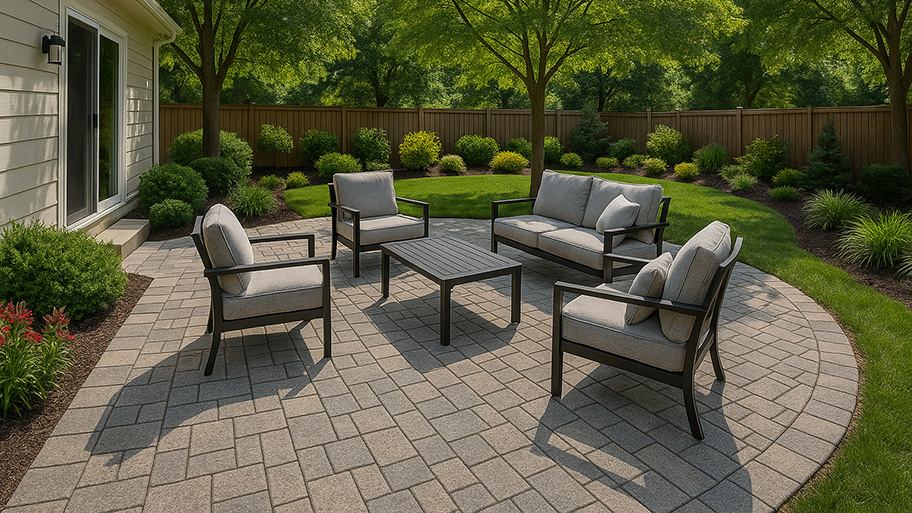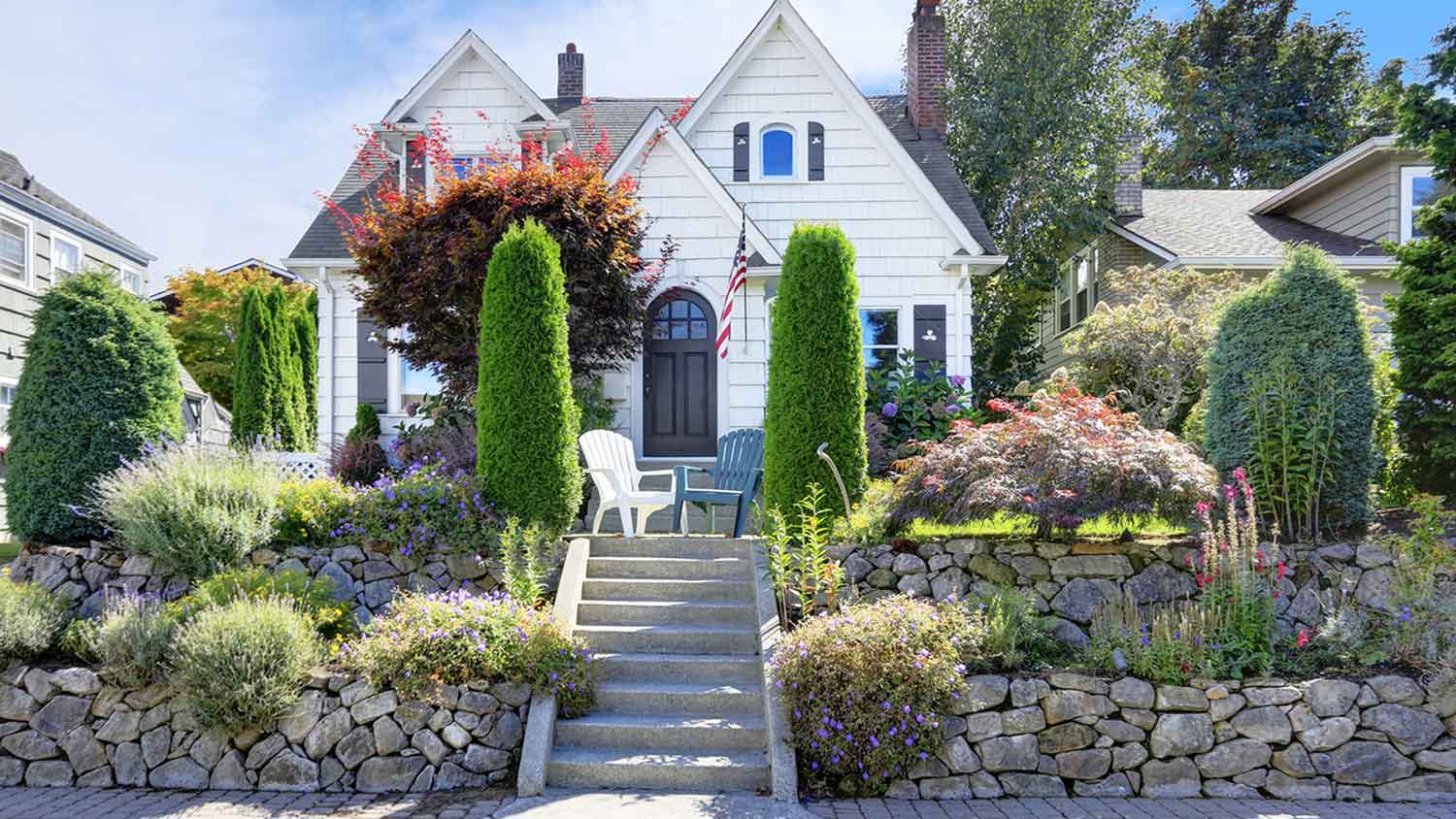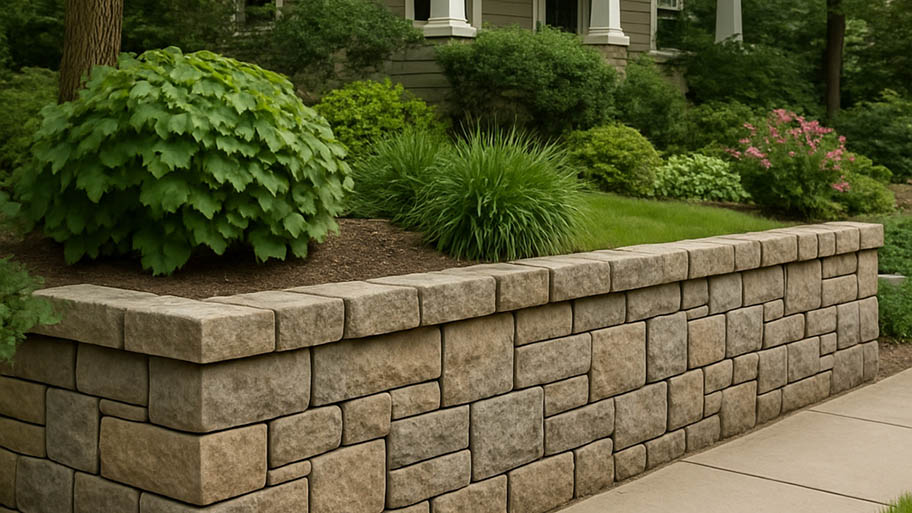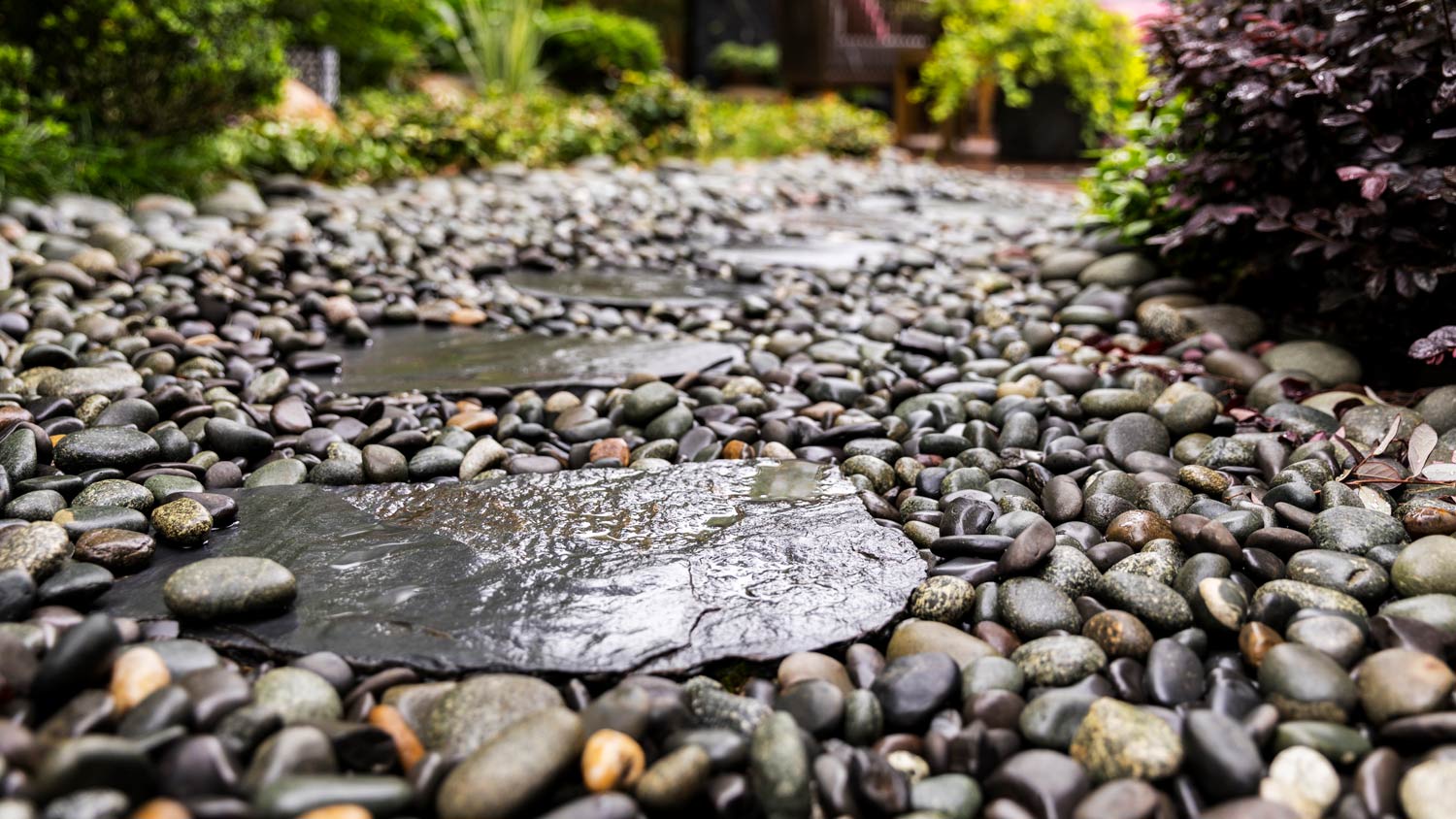
Thinking about installing concrete or brick pavers for a walkway or patio? Learn the cost of interlocking pavers in this informational guide.
Lock in your answers to these paving queries


Installing interlocking pavers can completely transform the look of your yard. They’re durable, good-looking, and can be used as steps to level up your landscaping. You’ll need to know the ins and outs of the project before calling a paving contractor near you. Clarifying the type of work you hope to get done will speed up the process and prevent costly surprises. Here are five common questions asked during an introductory call or consultation.
The cost to install interlocking pavers varies project by project, but unless you’re in a tight spot to have your yard perfect by a certain date, it doesn’t make sense to pay a premium to rush it. The paving job shouldn’t take more than a few days, though this, of course, depends on the size of your patio, walkways, and the number of steps. Try to schedule this project when the weather is pleasant—not too hot, not too cold, and with no rain or snow—and your installer will thank you for it.
Interlocking pavers can be installed on any flat ground. However, the most common locations are outdoor patios, walking pathways, and steps that lead to outdoor seating areas. Some people place pavers around fire pits and landscape features such as large trees or gardens.
While most interlocking paver jobs are done for aesthetic reasons, there may be other considerations that make pavers a good choice. For example, you may need a leveled surface for a shed or greenhouse. Or maybe you need a garden walkway for a person with a disability or a wheelchair. Clearly explain the need for the project, which may go beyond aesthetics.
There are many popular types of pavers you can use for this project, but the most common are brick and concrete. If you want to design your patio, walkway, or steps in a unique and elevated way, consider natural stone, porcelain, rubber, flagstone, and bluestone. Remember that not all paving materials are interlocking pavers, so be sure to discuss this with your pro.
Not all homeowners need interlocking pavers, even if they previously thought they did. Interlocking pavers, on the other hand, are tightly aligned, so while they don’t technically interlock, you don’t need to apply mortar between the pavers. Note that interlocking pavers often have weeds sprouting between the pavers and will likely require more upkeep than regular pavers, which use mortar to fill in the gaps.
From average costs to expert advice, get all the answers you need to get your job done.

Thinking about installing concrete or brick pavers for a walkway or patio? Learn the cost of interlocking pavers in this informational guide.

Retaining wall repair cost can vary widely based on the age and condition of the wall being restored. Learn why finding the right pro is important for getting the job done.

Kick erosion to the curb with an eye-catching retaining wall. Retaining wall costs vary based on the material, but this guide will help you budget.

How much pea gravel do I need? This calculator will help you determine quantity and cost for accurate budgeting for your project.

Have you noticed your pavers sinking or would you like to forget about the stains on your driveway? Here are common paver problems and what to do about them.

Lay pavers on grass with this simple 10-step guide and elevate your outdoor space. Pavers are lasting, affordable, and easy to maintain.